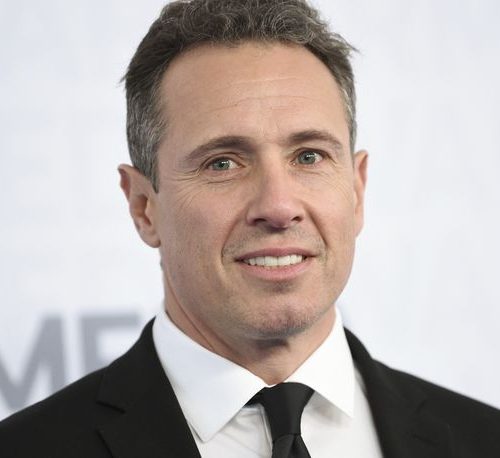BY DALE KINSELLA & NICK SOLTMAN | HollywoodReporter.Com
Troy Warren for CNT #Entertainment #Business
Two of the top litigators in this hot practice area discuss the five biggest misconceptions out there. Even those closest to Hollywood dealmaking don’t always have a clear picture about these types of disputes.
For the last month, profit participant lawsuits have been the talk of the town (or at least a corner of it). In our practice litigating profit participation suits, we often encounter talent, talent lawyers, and other dealmakers who share some of the same misperceptions — and they are, in many ways, closer to the issues than the average observer. That got us thinking: What do most people get wrong about profit participation lawsuits? What follows are the top five misconceptions about these cases.
Before we jump to the list, we wouldn’t be lawyers if we didn’t offer at least a few caveats. First, while we handle a lot of these cases, and hear about others we don’t, we aren’t omniscient, and our opinions are precisely that: our opinions. Second, a word about the audience for this piece. If you read The Hollywood Reporter, you might learn something new. If you are an in-house lawyer in the participations group of a major studio, you might not, but hopefully you’ll be engaged. Without further ado …
Misconception #1: The most successful television shows are the ones with the biggest “claims.”
It’s certainly true that some big cases stem from the most successful shows of all time. Take, for example, the $200 million settlement of the long-running litigation between Frank Darabont and CAA against AMC over profits on The Walking Dead. Or the record-setting $319 million jury verdict related to the ABC game show of the aughts, Who Wants To Be a Millionaire? But others, like the $179 million arbitration award against Fox on the long-running drama Bones, don’t flow from the shows atop the Nielsen rankings. (Disclosure: We litigated The Walking Dead and Bones cases.)
In fact, somewhat counterintuitively, the “sweet spot” for participant claims is probably long-running workhorses. (The distinction between the biggest claims, on the one hand, and the most profitable shows, on the other, will be clear in a moment.) Here’s why: A show that doesn’t run at least five seasons is unlikely to generate significant profits, which makes litigation less appealing. (This is changing in the direct-to-streaming era, where the absence of ancillary revenue streams such as domestic and foreign syndication and home video generally results in upfront buyouts.)
Meanwhile, on most big hits, the studios’ formulas (or the business affairs executives setting the terms) rein in the temptation to dramatically undersell the show. Studios and their affiliated networks — and, to be clear, this is almost never an issue when the studio and network are unaffiliated, except in cases of co-productions — know that pigs get fat, and hogs get slaughtered. On a hit show under-market fees guarantee litigation.
It’s the shows in the middle where studios don’t feel constrained to impute (or demand) premium license fees, deficit recoupment, etc. There are a number of reasons for this dynamic, but the biggest is that networks don’t cancel big hits, and the threat of cancellation is the go-to explanation for why the studio “had” to accept a reduced license fee or lacked the leverage to push for a customary one.
Misconception #2: Studios will roll over upon the mere threat of litigation.
Clients (and less frequently their reps) often assume that one letter from litigators, which may or may not include a draft complaint, will scare the studio straight. If only it were that easy! (It’s happened a few times in our careers, but it’s certainly not the norm.) The reality is that self-dealing is usually a nuanced issue, and the studios have defenses — sometimes contractual, sometimes factual, and sometimes based on “custom and practice.” Of course, we have our biases, but it’s silly to pretend otherwise. While very few cases go the distance, there’s a reason litigators say “trial dates settle cases,” not “draft complaints settle cases.”
Misconception #3: Arbitration should be avoided at all costs.
A lot of sophisticated lawyers on the talent side believe that arbitration is the devil. The reasons can be both prosaic (arbitrators can cost $10,000 per day, plus case management fees) and nefarious (studios and their big firm lawyers are more likely to be “repeat players”). But the reality is not so clear.
Yes, arbitration is expensive. But many contracts contain fee shifting provisions, entitling the prevailing party to recover those fees. While it’s not always easy to determine the “prevailing party”— if a participant claims $20 million in damages, but “only” recovers $3 million, did she “prevail”? — some talent agreements provide for arbitration fee shifting if the participant did better than the studio’s last offer. Given that most pre-litigation settlement offers are two to three digits lower than what the participant is claiming, such provisions dramatically reduce the “prevailing party” risk. Of course, this doesn’t dull the sting of the costs the claimant has to advance, but that pertains to litigation generally: no pain, no gain.
It’s also true that the average studio does arbitrate more than the average participant (though the discrepancy is usually less pronounced between the parties’ respective lawyers). But the most in-demand arbitrators are booked for 12+ months out. So the assumption that they are worried about being struck on the “next” case is a tad conspiratorial — even if you accept the insinuation about retired judicial officers, which we don’t.
Finally, it’s often assumed that if the studios want it — and, let’s be clear, they do; arbitration clauses are non-negotiable — then it must be bad. This is not an unfair reaction, if you assume that juries are more likely to be star-struck than arbitrators (although this assumption is at least inconsistent with the tendency of fans to side with owners and not players in labor disputes). But this is an empirical question that is increasingly difficult to answer. Simply put, given the prevalence of arbitration clauses, there aren’t many recent examples of jury trials.
In any event, deciding where to file isn’t that simple. A participant may well prefer to be in state court, but filing there doesn’t guarantee that the case stays there, as THR‘s Eriq Gardner pointed out in these pages. Not to mention that a surprise filing in open court — and the resultant publicity — may poison the ongoing negotiation dynamic. As a general rule, studios don’t like being blindsided — see Disney’s initial response to the Black Widowlawsuit — and it’s fair to wonder if ratcheting up the temperature is ultimately counterproductive. After all, once there is bad press, why not get your money’s worth? That may not matter to the most principled, most well-heeled participants, but most participants aren’t looking to be catalysts of change. They just want to be compensated fairly.
Misconception #4: It’s my agent/lawyer’s fault we ended up in litigation.
When tempers flare, it’s often tempting to look back at the underlying deal with a jaundiced eye. But nobody can predict the future with perfect clarity. In 2018, it was predictable that some movies would end up on the studios’ contemplated streaming services. A global pandemic closing movie theaters? Not so much. So it’s not surprising that many deals were silent on “day-and-date” releases — a strategy that did not exist and which nobody was predicting — at least not when movies costing $200 million to make and another $100 million to market were generating $1 billion at the worldwide box office.
The other point is that even the best deal lawyers, representing the most high-octane stars, directors, and producers, can’t get everything they want in any given negotiation. There often comes a point when a lawyer or agent has a choice: Agree to the deal as drafted, or walk from the project. Because clients are loath to walk, and studios are loath to lose the actors and creators that drive viewers, it’s often in both parties’ interest to “let the mystery be,” to quote one of our favorite title sequences (from HBO’s criminally underrated The Leftovers). Ironically, if litigation ultimately results, that’s usually because the project was a success. Most projects aren’t worth fighting about.
Misconception #5: Scarlett Johansson’s lawsuit is going to be the first of many “day-and-date” lawsuits.
We return to where we started: the ongoing Black Widow suit. While it’s too early to describe the effect it has had on profit participant litigation, we do have a prediction: It won’t unleash the avalanche of copycat suits that has been predicted. There are a few reasons for our pessimism.
First, although hers was not the first such suit (albeit the first filed publicly), the average studio contract gives studios a lot of discretion to determine how to distribute their films — if they choose to release them at all. Absent something else — a series of buyouts, an email from the studio’s chief counsel promising a wide theatrical release — the average profit participant has a steep road to climb.
Second, we’ve never met a client who preferred to litigate when there was a business deal to be done. In that vein, it’s probably not a coincidence that the other stars who were rumored to be “unhappy” with their Disney day-and-date releases are now attached to sequels.
Of course, as litigators, this is one prediction we hope we’re wrong about.
Dale Kinsella and Nick Soltman are litigators at Kinsella Weitzman Iser Kump & Holley LLP, where their team focuses on profit participation litigation for actors, directors, and producers against television and motion picture studios. All views are their own.
In Other NEWS



































